Discover 15 hidden attractions, cool sights, and unusual things to do in Wakefield (United Kingdom). Don't miss out on these must-see attractions: Yorkshire Sculpture Park, Sandal Castle, and The Hepworth Wakefield. Also, be sure to include Nostell Priory in your itinerary.
Below, you can find the list of the most amazing places you should visit in Wakefield (England).
Table of Contents
Yorkshire Sculpture Park
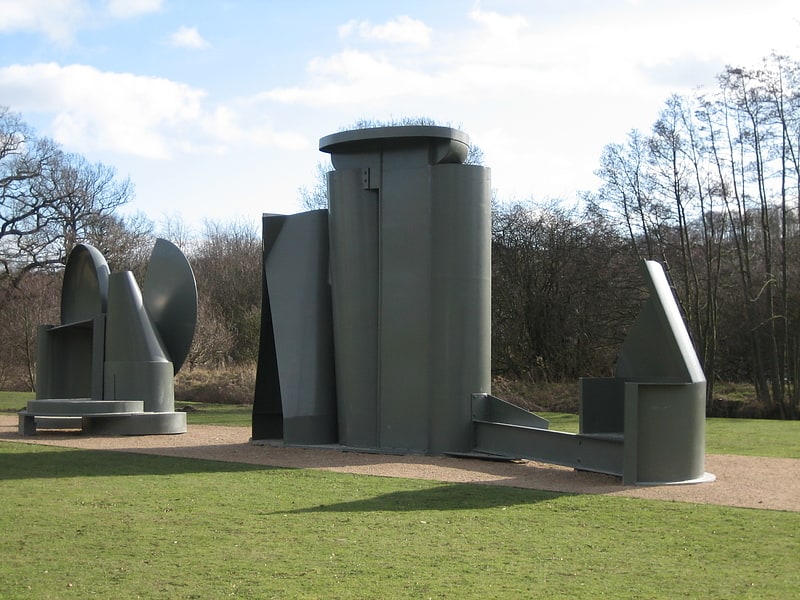
Art gallery in England. The Yorkshire Sculpture Park is an open-air gallery in West Bretton, Wakefield in West Yorkshire, England, showing work by British and international artists, including Henry Moore and Barbara Hepworth. The park's collection of works by Moore is one of the largest open-air displays of his bronzes in Europe. The sculpture park occupies the 500-acre parkland of Bretton Hall and straddles the border of West Yorkshire and South Yorkshire.
The Yorkshire Sculpture Park, opened in 1977, was the UK's first sculpture park based on the temporary open air exhibitions organised in London parks from the 1940s to 1970s by the Arts Council and London County Council (and later Greater London Council). The 'gallery without walls' has a changing exhibition programme, rather than permanent display as seen in other UK sculpture parks such as Grizedale Forest.[1]
Address: West Bretton, WF4 4LG Wakefield
Sandal Castle
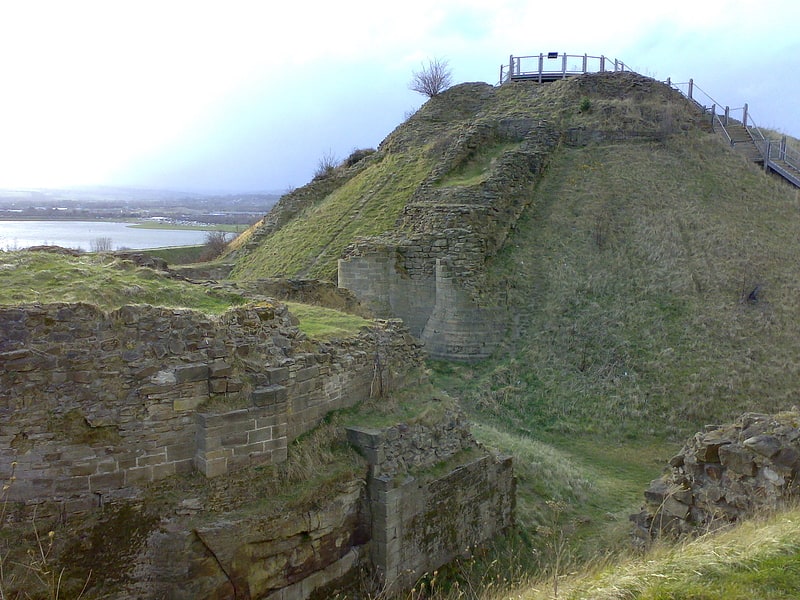
Ruined 15th-century fortress with tours. Sandal Castle is a ruined medieval castle in Sandal Magna, a suburb of the city of Wakefield in West Yorkshire, England, overlooking the River Calder. It was the site of royal intrigue and the setting for a scene in one of William Shakespeare's plays.[2]
Address: Manygates Lane, WF2 7DS Wakefield
The Hepworth Wakefield
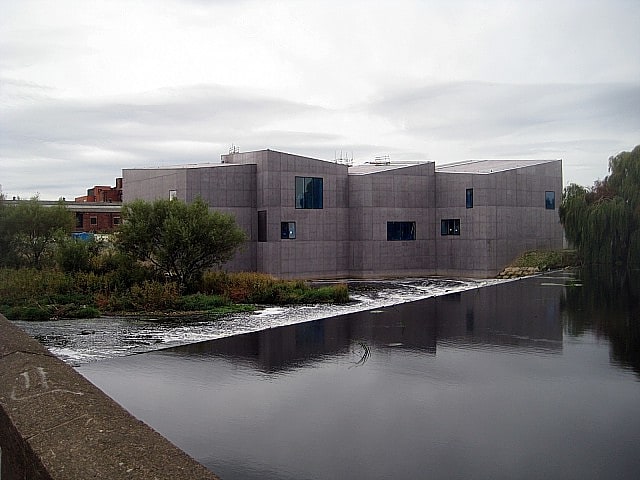
Striking, bright contemporary gallery. The Hepworth Wakefield is an art museum in Wakefield, West Yorkshire, England, which opened on 21 May 2011. The gallery is situated on the south side of the River Calder and takes its name from artist and sculptor Barbara Hepworth who was born and educated in the city. It is the successor of the municipal art collection, founded in 1923 as Wakefield Art Gallery, which spans the Old Masters to the twentieth century.
The gallery was designed by British architect David Chipperfield, who won an architectural design competition managed by RIBA Competitions and was built by Laing O'Rourke with funding from Wakefield Council, Arts Council England and the Heritage Lottery Fund. Yorkshire Forward, the Homes and Communities Agency, and the European Regional Development Fund have also supported the building of the gallery alongside a number of charitable trusts, corporations and private individuals. The Hepworth Wakefield is a registered charity under English law.
The gallery cost £35 million to build. Five weeks after opening it had received 100,000 visitors. In May 2012 it celebrated its first birthday, having received over 500,000 visitors in the year. In October 2015, the gallery launched the £30,000 biennial Hepworth Prize for Sculpture as part of the celebrations marking its 5th anniversary.[3]
Address: Gallery Walk, WF1 5AW Wakefield
Nostell Priory
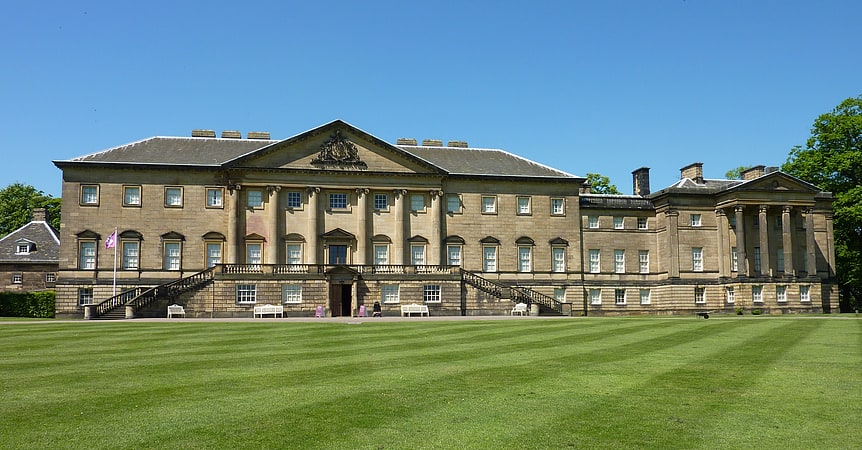
Historical landmark in Wragby, England. Nostell Priory is a Palladian house located in Nostell, near Crofton, close to Wakefield, West Yorkshire, England, approached by the road to Doncaster from Wakefield. It dates from 1733, and was built for the Winn family on the site of a medieval priory. The Priory and its contents were given to the National Trust in 1953 by the trustees of the estate and Rowland Winn, 3rd Baron St Oswald.[4]
Address: Doncaster Rd, WF4 1QE Wakefield
Wakefield Cathedral
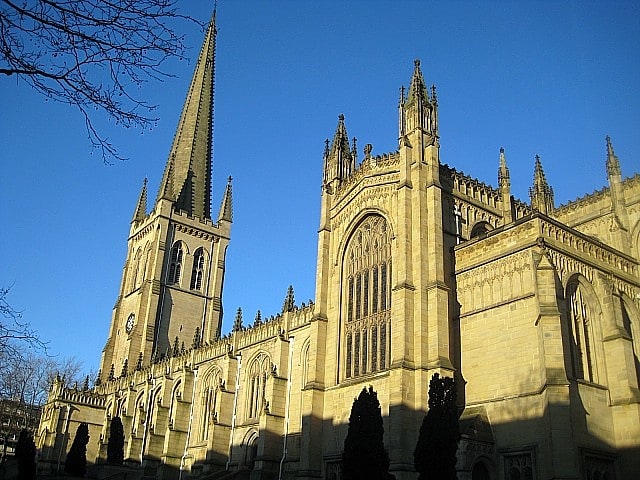
Anglican cathedral with community focus. Wakefield Cathedral, or the Cathedral Church of All Saints in Wakefield, West Yorkshire, England, is a co-equal Anglican cathedral with Bradford and Ripon Cathedrals, in the Diocese of Leeds and a seat of the Bishop of Leeds. Originally the parish church, it has Anglo Saxon origins and, after enlargement and rebuilding, has the tallest spire in Yorkshire. Its 247-foot spire is the tallest structure in the City of Wakefield. The cathedral was designated a Grade I listed building on 14 July 1953.[5]
Address: Westmorland St., WF1 1PJ Wakefield
Thornes Park

Park in Wakefield, England. Thornes Park is a large public park situated close to the centre of Wakefield, West Yorkshire, England. Along with Clarence Park and Holmfield Park it forms a large parkland to the south west of the city.
The park hosts a model railway, formal gardens, a lake, an indoor leisure centre and an athletics track. The park also has 60 hectares of open spaces and a two-mile circular walkway around the park.
A mound lies in the centre of the park, once part of an old motte-and-bailey castle, which offers views across the city.[6]
Pugneys Country Park
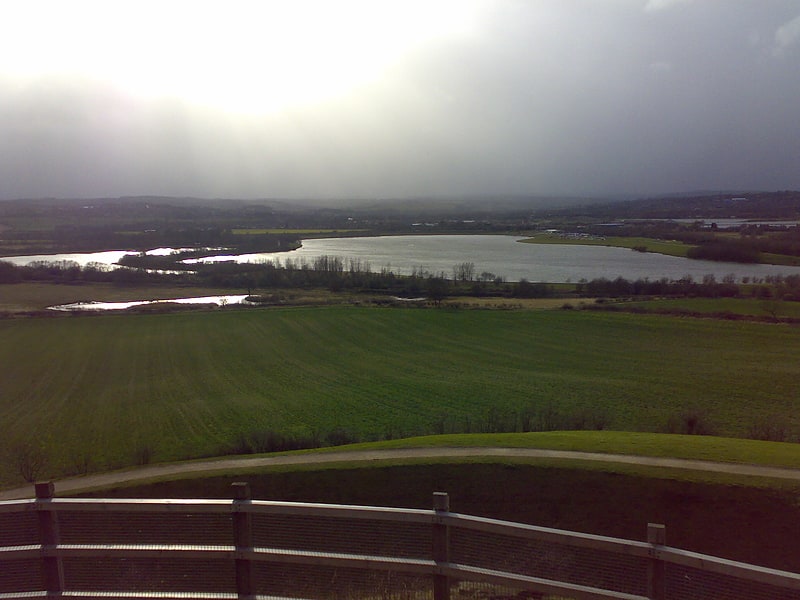
Country park in England. Pugneys Country Park is a 250-acre park located on the A636 between Wakefield, West Yorkshire, England and Junction 39 of the M1 motorway. It is a Local Nature Reserve.
The area was developed from a former opencast mine and a sand and gravel quarry and was opened to the public in 1985. It is overlooked by Sandal Castle.
The park comprises two lakes, the larger of which is dedicated to non-powered watersports and the smaller lake is designated as a nature reserve.
A 7+1⁄4 in (184 mm) gauge miniature railway, running round part of the larger lake, operates on weekends and bank holidays, and cafeteria facilities are available.
The nature reserve is home to a large flock of non-breeding swans, with up to 100 in residence at any time.
The lakes serve as a flood defence by providing an overflow from the River Calder.[7]
The Stanley Ferry

Through arch bridge. Stanley Ferry Aqueduct was built between 1836 and 1839 to take the Aire and Calder Navigation over the River Calder in West Yorkshire, England. It is one of the earliest through arch bridges in the world and is considered to be the longest span aqueduct executed in cast iron.
Designed by George Leather Sr. and built by H. McIntosh, the aqueduct has a span of 165 feet (50 m), a width of 24 feet (7.3 m) and a depth of 8.5 feet (2.6 m). It is still in use today, though an additional wider concrete aqueduct was constructed alongside in 1981 and the bridge was then renovated. Stanley Ferry is also the place where the Tom Pudding tub boats were loaded with coal from local collieries between 1863 and 1985 and transported down to Goole in long trains by canal.
The site is one of three historic fords crossing the River Calder near Wakefield. Because the water was deepened for navigation a ferry became necessary, but was replaced by the first bridge in 1879.
Like many through arch bridges, the design of the bridge is often confused with the tied-arch bridge; many bridges have both characteristics. However in this case the bridge is of cast iron, which would be weak in tension. Although the aqueduct channel is in the right position to act in tying the arch, it would have no strength in this direction. At Stanley Ferry, the outward sideways thrust of the arch is retained by its abutments, as for the simple arch bridge.[8]
Address: Ferry Lane, Stanley, Wakefield
National Coal Mining Museum for England
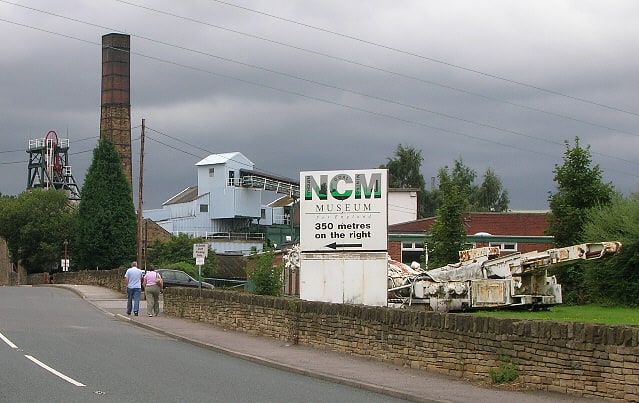
Industrial museum with underground tours. The National Coal Mining Museum for England is based at the site of Caphouse Colliery in Overton, Wakefield, West Yorkshire, England. It opened in 1988 as the Yorkshire Mining Museum and was granted national status in 1995.[9]
Address: New Rd, WF4 4RH Overton (Kirkburton)
County Hall
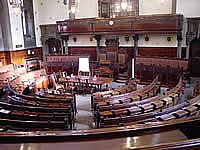
County Hall or West Riding County Hall stands at the corner of Bond Street and Cliff Parade in Wakefield, West Yorkshire, England. It is the main headquarters of Wakefield Metropolitan District Council. It is a Grade I listed building.[10]
Address: Wood Street, Wakefield
Chantry Chapel of St Mary the Virgin
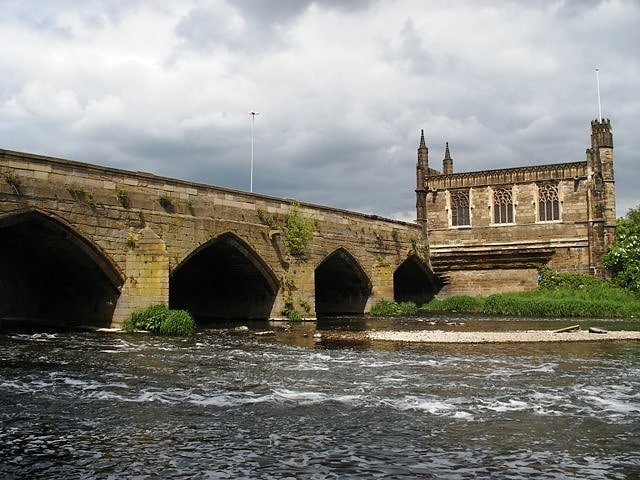
The Chantry Chapel of St Mary the Virgin, Wakefield, is a chantry chapel in Wakefield, West Yorkshire, England, and is designated a Grade I Listed building by English Heritage. It is located south of the city centre on the medieval bridge over the River Calder. It is the only survivor of four chantries in Wakefield and the oldest and most ornate of the surviving bridge chapels in England. Others are at St Ives, Rotherham, Derby and Bradford-on-Avon. The chapel has had three west fronts, the original medieval façade having been removed to Kettlethorpe Hall in 1832. The medieval bridge is a scheduled ancient monument.[11]
Address: Chantry Bridge, Wakefield
Theatre Royal Wakefield

Theatre in Wakefield, England. The Theatre Royal Wakefield is a theatre in Wakefield, England, which dates back to 1894. The theatre was originally known as the Theatre Royal and Opera House and dates back to the 1770s.
Today's theatre was designed in 1894 as the Wakefield Opera House, by theatre architect Frank Matcham, and was built for a price of £13,000. The Theatre Royal Wakefield is the smallest remaining of Matcham's theatres.
In the 1920s the theatre had to compete against cinemas and in the summer live shows were replaced by films. In 1954 the theatre closed and became a picture house, and a few years later, a bingo hall. However, in 1981 it reopened as the Wakefield Theatre Royal under chairman Sir Rodney Walker. Support was given to revitalise the theatre from city leaders and music and drama amateurs and professionals.
Theatre Royal Wakefield operates as both a producing and a receiving house. In 2011 British playwright John Godber joined the Theatre as Creative Director, and the Theatre now plays a producing role for The John Godber Company.
Theatre Royal Wakefield works with young people, with its Performance Academy operating across two sites in Wakefield and Pontefract. It runs dance, music and drama training for children aged from 5 to 18, as well as its youth company, Wakefield Youth Music Theatre.
In 2012 the Theatre applied for funding from the Heritage Lottery Fund for a £2.6 million project to restore the theatre building.[12]
Address: Wakefield, Drury Lane,, Wakefield,, WF1 2TE
St Austin's Church
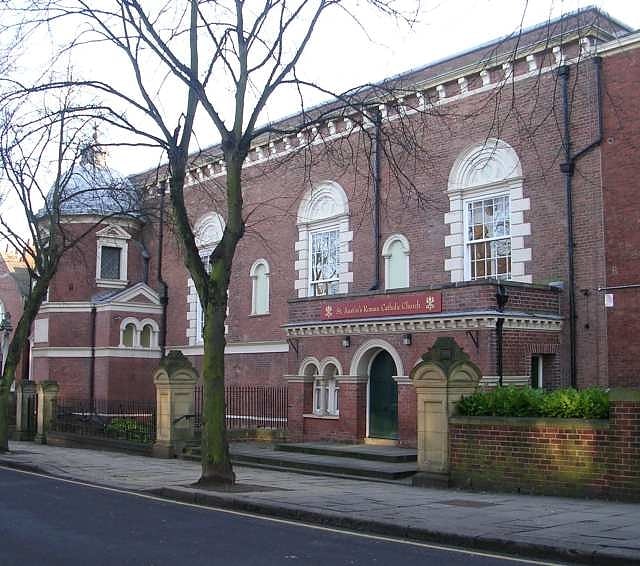
Church building in Wakefield, England. St Austin's Church is a Roman Catholic Church building in Wakefield, England. It is situated where Northgate Road meets Marsh Way close to the city centre. It was founded in 1827 by the Society of Jesus and is a Grade II listed building.[13]
Address: 6 Wentworth Terrace, WF1 3QN Wakefield
Wakefield Museum
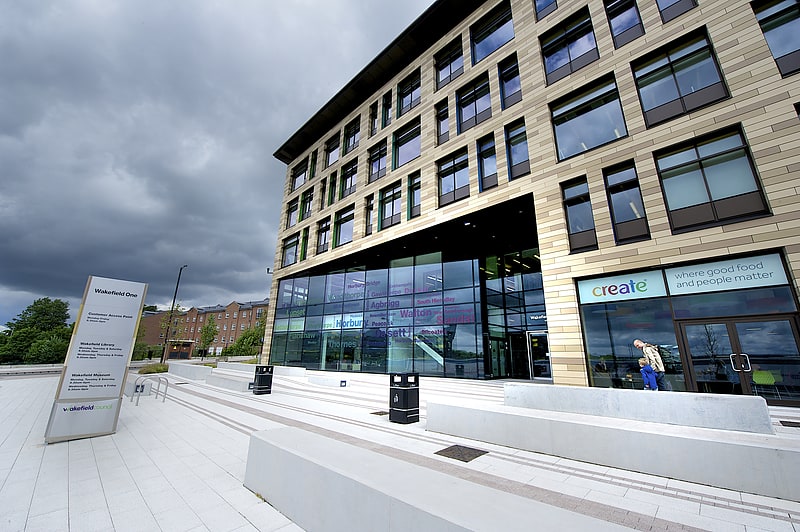
Museum in Wakefield, England. Wakefield Museum is a local museum in Wakefield, West Yorkshire, north England, covering the history of the city of Wakefield and the local area from prehistoric times onwards.[14]
Address: Wakefield One Burton Street, WF1 2EB Wakefield
Heath Hall
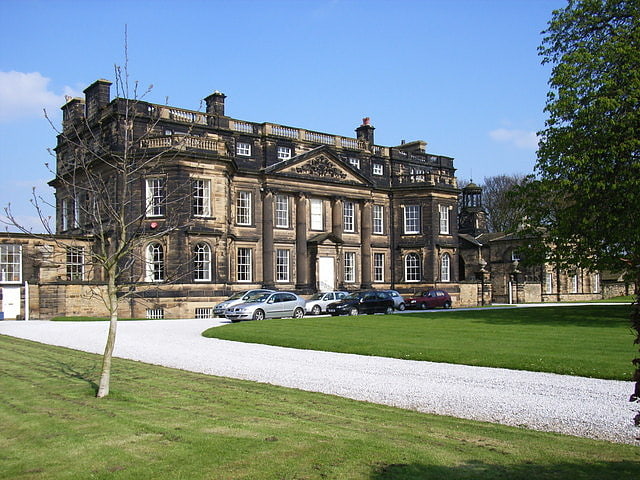
Historical landmark in Heath, England. Heath Hall, Heath, Wakefield, West Yorkshire is a country house dating from 1709. Originally called Eshald House, the estate was purchased by John Smyth whose nephew engaged John Carr of York to reconstruct the house between 1754 and 1780. In the 19th century, the house was remodelled by Anthony Salvin. Heath House is a Grade I listed building.[15]